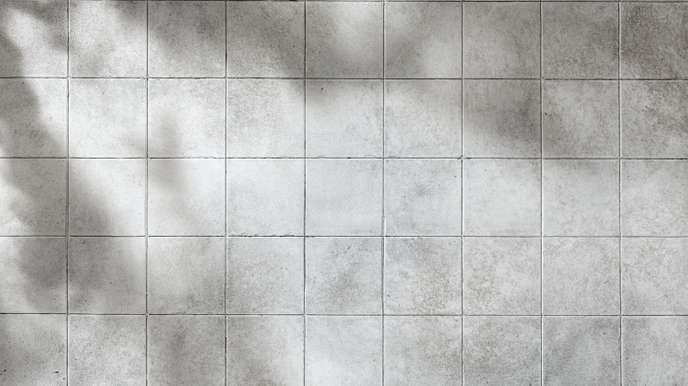
DIY Bathroom Ceramic Tile Flooring in 10 Easy Steps
Ceramic Tile Flooring for your DIY Bathroom Project in 10 Easy Steps
Are you considering a DIY bathroom makeover and wondering how to spruce up your space? Ceramic tile flooring can be a game-changer, transforming your bathroom into a stylish and functional oasis. In this guide, we’ll take you through the process of installing ceramic tile flooring in your bathroom in 10 easy steps. Let’s get started!
Step 1: Gather Your Tools
Before you embark on your DIY journey, it’s essential to have all the necessary tools and materials ready. Here’s a detailed breakdown of what you’ll need:
- Ceramic Tiles: Choose the type and design that suits your bathroom. Ensure you have enough to cover the entire floor, plus some extra for cuts and replacements.
- Tile Adhesive: Invest in high-quality adhesive to ensure a strong bond between the tiles and the floor.
- Trowel: A notched trowel is used to spread the adhesive evenly. The notches create ridges that help with adhesion.
- Tile Spacers: These small, cross-shaped tools are crucial for maintaining consistent gaps between tiles, ensuring a professional look.
- Tile Cutter: You’ll need this to cut tiles to fit the edges and corners of your bathroom floor.
- Level: A level is essential to check for any uneven spots on your bathroom floor. Ensuring a level surface is critical for a successful tile installation.
- Notched Trowel: This tool is used to spread adhesive on the floor in even, grooved patterns.
- Rubber Float: It’s used for pressing grout into the spaces between tiles and removing excess grout during the grouting process.
- Grout: Select grout that complements your tile choice. It’s used to fill the gaps between tiles and provides structural support.
Having these tools and materials on hand from the beginning will make your DIY bathroom tile installation much smoother and efficient.
Step 2: Prepare the Surface
A well-prepared surface is the foundation of a successful tile installation. Take the following steps to ensure your bathroom floor is ready:
- Clean: Begin by removing any existing flooring material and debris. Ensure the floor is clean and free from dust or particles that could affect the tile’s adhesion.
- Level: Use your level to check for any uneven spots or imperfections. If you find any, you may need to apply a self-leveling compound to create a smooth and level surface. This is a crucial step in preventing tiles from cracking or shifting.
Step 3: Plan Your Layout
A thoughtfully planned layout is essential for a visually appealing and balanced tile installation. Here’s how you can plan your layout:
- Start in the Center: Begin your tiling project in the center of the room. This approach ensures that tile cuts at the edges will be even.
- Dry-Fit Tiles: Before applying adhesive, dry-fit the tiles to visualize the pattern and make any necessary adjustments. This step will help you avoid errors once the adhesive is applied.
Step 4: Apply Adhesive
The adhesive is the glue that holds your tiles in place. Here’s how to apply it effectively:
- Notched Trowel: Use a notched trowel to spread tile adhesive evenly over a small section of the floor. The notches on the trowel create ridges in the adhesive, which improves tile adhesion.
- Work in Sections: To prevent the adhesive from drying too quickly, work in small sections. It’s best to work in a manageable area and then proceed to the next.
Step 5: Lay the Tiles
Now comes the exciting part – placing the tiles in their designated spots:
- Tile Spacers: Insert tile spacers between tiles to maintain even gaps. These gaps are essential for grout application and ensure a professional finish.
- Press Firmly: Press each ceramic tile down firmly onto the adhesive to create a strong bond. This ensures the tiles stay in place during regular use.
Repeat this process for the entire bathroom floor, ensuring that each tile is correctly positioned and the gaps between them are consistent.
Step 6: Cut Tiles as Needed
When tiling a bathroom floor, it’s almost inevitable that you’ll need to cut tiles to fit the edges and corners:
- Tile Cutter: Use a tile cutter or tile saw to achieve clean, precise cuts. Measure and mark the tiles before cutting them to fit the space.
These cut tiles will complete the look and ensure a neat and professional finish to your bathroom floor.
Step 7: Allow Adhesive to Dry
Once all the tiles are in place, it’s important to give the adhesive time to set:
- Follow Manufacturer’s Instructions: Different adhesives have varying drying times. Typically, you’ll need to wait for 24-48 hours. It’s essential to follow the manufacturer’s instructions for the specific adhesive you’re using.
During this time, avoid walking on the tiles or putting any pressure on them to ensure a secure and stable installation.
Step 8: Apply Grout
Grout is the material that fills the gaps between tiles and provides structural support. Here’s how to apply it:
- Use a Rubber Float: A rubber float is ideal for pressing grout into the spaces between tiles. Ensure you fill all the gaps evenly.
- Remove Excess Grout: After applying grout, use a damp sponge to remove any excess grout from the surface of the tiles.
The grout will need to dry for about 24 hours before you proceed to the next step.
Step 9: Clean and Seal
Cleaning and sealing your ceramic tile floor are crucial for its long-term durability and appearance:
- Clean the Tiles: After the grout has dried, clean the tiles with a damp cloth to remove any grout residue and ensure they look their best.
- Apply Grout Sealer: To protect your bathroom floor from moisture and stains, apply a grout sealer. This step will make maintenance easier and extend the life of your beautiful tile flooring.
Step 10: Finishing Touches
You’re almost there! The final step involves a few finishing touches to complete your ceramic tile flooring installation:
- Replace Baseboards: Reinstall or replace any baseboards that were removed during the installation process.
- Caulk the Edges: Apply caulk along the edges of the tiles where they meet the walls or other surfaces to create a clean and watertight seal.
- Add Necessary Transitions: If your bathroom flooring transitions to a different type of flooring in adjacent rooms, install transition strips for a seamless look.
Now, with these finishing touches, your beautiful ceramic tile flooring is ready for use and will transform your bathroom into a stylish and functional space.
Don’t forget to consult our related article on the most essential tools used in a bathroom remodeling project for additional tips and guidance on your DIY journey. Happy tiling!
FAQ: Your Ceramic Tile Flooring Questions Answered
Q1: Is ceramic tile durable enough for a bathroom? Absolutely! Ceramic tiles are water-resistant, durable, and perfect for bathroom use. They can withstand moisture and are easy to clean.
Q2: Can I install ceramic tile over existing flooring? While it’s possible to install ceramic tile over some existing flooring, it’s essential that the surface is clean, level, and in good condition. Consult a professional if you’re uncertain.
Q3: How long does it take to complete a DIY ceramic tile flooring project in a bathroom? The duration can vary depending on the size of the bathroom and your experience. Typically, it may take a few days from preparation to completion.
Q4: Do I need professional help for tile installation? You can install ceramic tile yourself if you’re comfortable with DIY projects and have the necessary tools. However, consulting a professional is always a good idea for complex projects.
Q5: How can I keep my ceramic tile flooring looking new? Regular cleaning and sealing will help maintain the appearance of your ceramic tile flooring. Sweep or vacuum regularly, and mop with a gentle cleaner.
Ready to tackle your DIY bathroom project? Follow these 10 easy steps for ceramic tile flooring installation, and you’ll have a bathroom that’s not only functional but also stylish and durable. For more tips on bathroom remodeling, don’t forget to check out our related article on the most essential tools used in a bathroom remodeling project.






